



Tatiana Bazzichelli is a researcher, networker and curator, working in the field of hacktivism and net culture. She is part of the transmediale festival team in Berlin, where she develops the reSource for transmedial culture, an ongoing distributed project of networking and research within the transmediale festival. She received a Ph.D. in Information and Media Studies from Aarhus University (DK), conducting research on disruptive art practices in the business of social media (title: Networked Disruption: Rethinking Oppositions in Art, Hacktivism and the Business of Social Networking). Bazzichelli is also a Postdoc Researcher at the Centre for Digital Cultures /Leuphana University of Lüneburg (DE).
In light of absolute domination by market forces over all of our lives, and with the top-down orientated power systems’ bias towards business and the implementation of a consumer class. New ways of thinking around the problem is called for. There has been a dramatic shift of unethical companies such as BP funding art’s and technology projects, and mainstream museums and galleries in the UK. [1] Alongside this, those hoping to receive arts funding are told to be innovative and more entrepreneurial than they already are. What they really mean by ‘innovative and entrepreneurial’ is, get in line with the values of a corporate mentality, and not be contextual or critical in one’s art practice. This wholesale move towards business as it further dominates the content, ideas, societal context, and missions by artists and art collectives – is of deep concern for all who wish to explore freedoms of expression on their own terms and not inline with the state’s or a corporation’s set of diverting agendas.
Art activism in media art and transdiscilpnary arts culture has engaged with political and societal issues while under the gaze of neoliberalism quite successfully. However, what changes have occured that we can draw upon to say we have built real alternative values for others to work with? There are plenty of people from the dark side calling us to join them, like that eirie voice from the original Evil Dead movie.

I’m reminded of Thomas Frank’s insightful words in his article TED talks are lying to you, that those who urge us to “think different” almost never do so themselves. [2] And this is the nub, what will become us if we step over into their world and adapt our minds to their visions?
“To expect or even wish those who rule and those serving them to change, and challenge their own behaviours and seriously critique their own actions is as likely as winning the National Lottery, perhaps even less.” [3] (Garrett 2013)
So, this brings us Tatiana Bazzichelli who has been thinking about this stuff a lot. Her Proposition is that we need climb out of these oppositional loops in order to find different ways of being, and refocus on potential art strategies in relation to a broken economy. In her publication Networked Disruption: Rethinking Oppositions in Art, Hacktivism and the Business of Social Networking, Bazzichelli puts forward the notion of disruptive business and it “becomes a means for describing immanent practices of hackers, artists, networkers and entrepreneurs”, and sheds “light on two different but related critical scenes: that of Californian tech culture and that of European net culture – with a specific focus on their multiple approaches towards business and political antagonism.”
Marc Garrett: In your book you examine a breadth of disruptive practices of networked art and hacking culture in California and Europe. You propose your main objective is to rethink the meaning of critical practices in art, hacktivism and social networking, analyzing them through business instead of being in opposition to it.
Could you explain how this would change situations and what it would bring to artists exploring disruption as part of their practice, networked art culture and the wider community, and what this may look like?
Tatiana Bazzichelli: I will begin answering your question by adding another one: Why do we need to rethink artistic and hacktivist oppositions in the context of social media and after the emergence of Web 2.0? This question is at the core of my book, and also the main link that connects together my previous book, Networking: The Net as Artwork (2006), and the following ones centered on the concept of networked disruption and disrupting business.
The idea of conscious participation in media practices is central to analyse the evolution and transformation of the concept of “networking” in the age of social media. My reflections are the consequence of a process of direct involvement within the activist (or rather “artivist”) scene in Italy since the mid-90s, and furthermore, they are based on the analysis of a more international fieldwork of practices between the Europen tradition of netculture, and the development of cyberculture in California. Practically all my books are to be thought of as subjective, and as consequences of a personal experience which aims to create connections between very diverse fields of action, applying the idea of networking both in theory and practice, and as a methodology of writing.
Between the end of the 1990s and the early 2000s, many actions of media criticism were often very dialectical, and rooted on the idea of antagonism as radical opposition. I am for example thinking about what was (erroneously) called “the anti-globalization movement”, the protests in Seattle, Prague, Goteborg, Genoa, etc.: somehow it was easier to identify an “enemy”, for everyone to unite against the same power. Unfortunately this also meant that it was easier to identify the members of the movement(s) themselves, and many protests faced violent chains of repression by the authorities. In particular in Genoa, the Italian movement and its global counterparts were hit hard. My personal opinion is that the frontal opposition, the idea of assaulting the “red zone” during the protests, did not work at all: we basically played the game of the police. Without dismissing this experience, which was very important in itself and for the start of new activist projects, after Genoa 2001 I started searching for a new way of activism that was not black and white, and which would be harder to appropriate. This was also the reason why I started entering in contact with many projects in the queer, pink, and independent porn culture, which were combining ludic strategies and playful disruption beyond oppositional confrontation. I was trying to connect those to the concept of hacking – mixing the codes to create disturbance, to generate subliminal interventions, to give rise to paradoxes, fakes and pranks, as previous projects based on multiple identities, from Luther Blissett to Neoism and Monty Cantsin, had done before.

“In 1994, hundreds of European artists, activists and pranksters adopted and shared the same identity. They all called themselves Luther Blissett and set to raising hell in the cultural industry. It was a five year plan. They worked together to tell the world a great story, create a legend, give birth to a new kind of folk hero.” Luther Blissett.
But after 2004, which is also the time of the emergence of Web 2.0, the critical framework of art and hacktivism shifted: networking, a concept which had informed the Avant-garde since the 1960s, became a tool for a wider audience, and a pervasive business strategy. The ideas of openness, do it yourself, sharing, the “mottos” of the hacker culture in the 1990s, became the main rhetoric of the Web 2.0 companies based on the appropriation of “free culture”. This meant to me that also artistic and hacker practices needed to be recontextualised, since the concept of social networking became something completely different from its roots, and the business companies themselves were applying the concept of disruption as main business logic. Is it possible to oppose disruption with disruption?
In the era of immaterial economy and increasing flexibility, the act of responding with radical opposition no longer looks like an effective practice, since the risk is to simply feed the same machine replicating the capitalistic logic of competitiveness and power conflicts. In my opinion, and here I speak through my “artivist” experience, even the concept of the multitude as a model of resistance against the capitalist system – which runs at a theoretical level – is difficult to apply on a pragmatic level without having to recreate the traditional dynamics of the “power-contra power” conflict. The point is to try to figure out how to imagine new forms of participation that go beyond dualistic conflict – and that go beyond the creation of a hegemonic and holistic entity, although presented as a plural (the multitude, indeed). As a result, it is definitely necessary to reformulate the language, which enters the sphere of production and the political, as Paolo Virno states, but most of all, activists practices and critical strategies need to be rethought.
What my book Networked Disruption suggests is the act of performing within the capitalist framework, not against it, keeping the dialectic open through coexisting oppositions. The notion of disruptive business is useful for reflecting on different modalities of generating criticism, shedding light on contradictions and ambiguities both in capitalistic logics and in artistic and hacktivist strategies, while rethinking oppositional practices in the context of social networking. In this book the concept of the Art of Disrupting Business must be interpreted beyond categorical definitions, and as a new input for imagination. “Disruption” implies a multi-angled perspective and it is a two-way process, where business and the antagonism of business intertwine. Adopting a hacker’s strategy, hacktivists and artists take up the challenge of understanding how capitalism works, transforming it into a context for intervention and trying to alter business logics. Rethinking strategies and modalities of opposition implies that new forms of interventions and political awareness should be proposed without antagonising them, but rather by playing with them and disrupting them from the inside of the machine. The vision of a distributed network of practices, participations and relationships can only be fragmented, and based on multiple layers of imagination.
Today there are artists and activists who are inspired by a certain tradition of “disruption”, creating interventions from within, critically appropriating the business logics, stretching its limits, or proposing alternative models to it. Many of them are the case studies of my book, where I propose a constellation of social networking projects that challenge the notion of power and hegemony, and where social networking is not only technologically determined. Projects and experiences such as mail art, Neoism, The Church of the SubGenius, Luther Blissett, Anonymous, Anna Adamolo, Les Liens Invisibles, the Telekommunisten collective, The San Francisco Suicide Club, The Cacophony Society, the early Burning Man Festival, the NoiseBridge hackerspace, and many others. Of course there are many more of these. Holes in the system are everywhere, ready to be performed and disrupted.
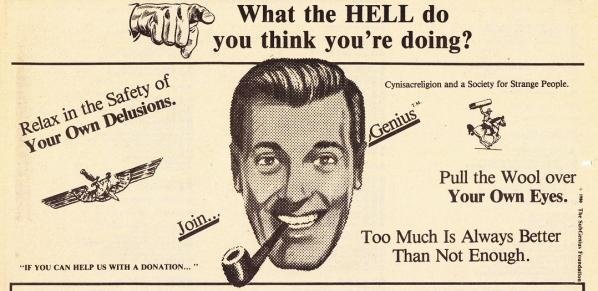
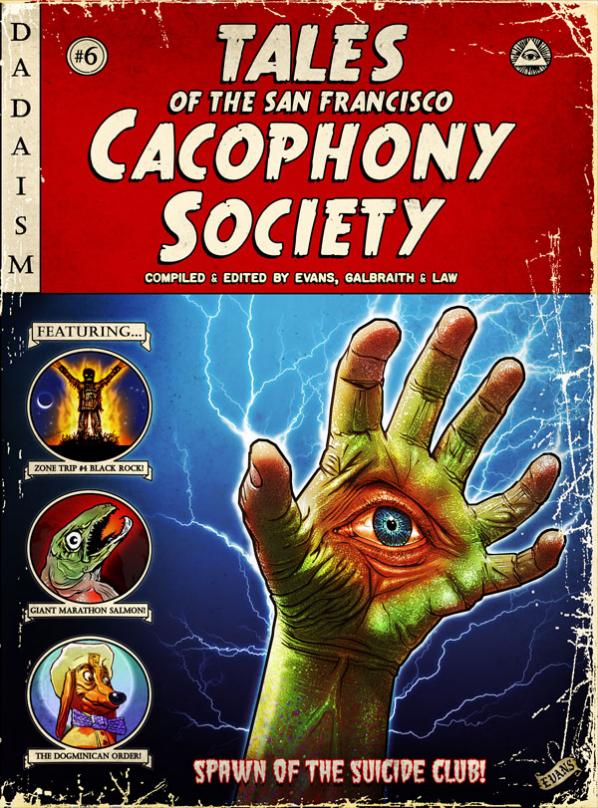
MG: There is a quote in the book that it says, “Innovation is rooted in Desire, not need. Desire is the motivation for behaviour. Desire leads to goals, and goals lead to motivation, the internal condition that gives rise to what we want to do, based on our goals, what can we do – based on the norms of behaviour – and what we will do – the actions that we voluntarily decide to undertake. Motivation is the ethos of goal-oriented behaviour, and a company’s ability to understand motivation directly contributes to the success of their products and services in the marketplace” (Manu, 2010, p. 3).
I’m wondering, coming from an activist background myself where do you think free culture fits into this dialogue, especially in respect as a critique of products and services in the marketplace, as well as social forms of emancipation?
TB: The quote you are referring to comes from a book entitled Disrupting Business: Desire, Innovation and the Re-design of Business (Alexander Manu, 2010). As we can read in the business literature, the concept of disruptive business is rooted in the idea of disruptive innovation. Disruptive innovation, a term coined in 1997 by Clayton Christensen, Professor at the Harvard Business School, is used in business contexts to describe innovations that introduces a product or service in ways that the market does not expect. In the business culture, disruption not only means rupture, but links to the idea of innovation and re-design of behavioural tendencies. Therefore performing disruption shows a process that interferes with business, whilst at the same time generating new forms of business. This mutual feedback loop is at the core of my analysis.
However in my book business is neither analysed through classical business school methodologies, nor seen as positive or negative, but it is a means for working consciously on political practices – and for raising questions on art and media criticism. In 2009 I was a visiting scholar at Stanford University where I was researching the reasons of the progressive commercialisation of networking contexts after the emergence of Web 2.0, through the development of hacker culture in the Silicon Valley. From the interviews that I conducted, and also via the close reading of the book From Counterculture to Cyberculture by Fred Turner, it was evident that since the development of the early cyberculture hackers and members of the so-called “counterculture” have been trying to disrupt business via their practices, and in parallel, business corporations have been trying to do the same through technological innovation. Since the 1960´s, hackers and artists in California have been active agents in business innovation while at the same time also undermining business. This is also very evident today in the business context of Web 2.0 where many hackers are working at the core of business, while disrupting it – the Anonymous entity is one of the most successful examples of this.
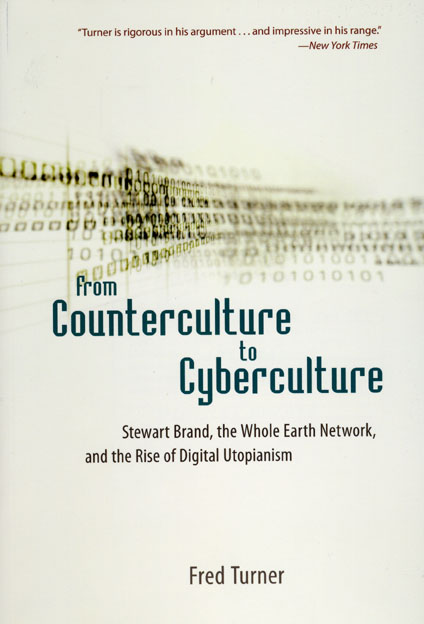
In my book I compare what the concept of business disruption meant in the European context and in the US, especially in Silicon Valley. When I was interviewing computer engineer Lee Felsenstein he told me that in California hackers would refuse hegemony but not business. This is also why many of them have no problem in working for Google, which is actually employing the best hackers of the area. In Italy we always claimed that hacking is politics, and politics is an “attitude”, which informs your everyday life and lifestyle. What I discovered in the Silicon Valley is that libertarian practices are often linked with the refusal of the political, and this is the position of many members of the hacker culture in California. Therefore, what for me was the initial “problem”, the contamination of business and free culture, was not considered as such among the hackers that I met between San Francisco and Palo Alto.

This consideration leads me to create a model of analysis named the “disruptive feedback loop”, based on the idea of layering instead of cooptation – such an idea of “layering” rather than cooptation, was proposed by Fred Turner in the lecture “The Bohemian Factory: Burning Man, Google and the Countercultural Ethos of New Media Manufacturing” (2009), while discussing the social phenomenon of Burning Man. The idea of the “mutual feedback loop” between business and hacker culture is instead the result of a conversation in 2009 with Jacob Appelbaum, who at the time was an active member of NoiseBridge in San Francisco, when we were reflecting on the development of hacker spaces in California. In my disruptive loop model, artists and hackers use disruptive techniques of networking in the framework of social media and web-based services to generate new modalities for using technology, which, in some cases, are unpredictable and critical; business enterprises apply disruption as a form of innovation to create new markets and network values, which are also often unpredictable. Networked disruption is a place where the oppositions coexist, and it is a reconfiguration of practices into a structure of mutual feedback instead of opposition.
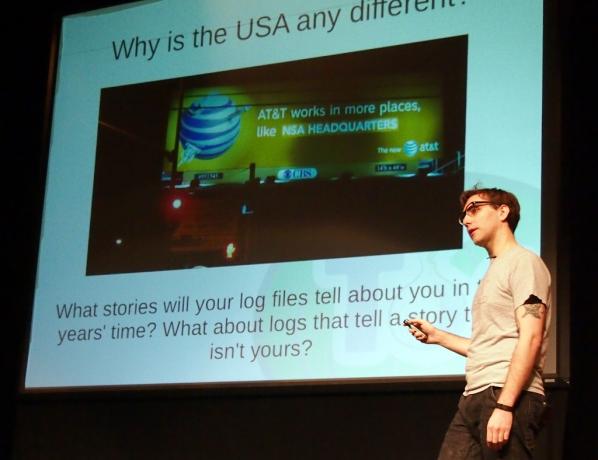
Here I propose disrupting business as an art practice: artists and hackers adopt viral and flexible strategies, as does contemporary networking business, and by provoking contradictions, paradoxes and incongruities, business logic is détourned. This model can be applied both in the analysis of business contexts of social networking and of critical practices generated by hackers and artists. For example, projects such as Anna Adamolo and Seppukoo reflect on the tensions between the open and closed nature of social media, stressing the limits of Facebook’s platform, and working on unpredictable consequences generated by a disruptive use of it. Paradoxically, to be critical of business we should learn from it.
The Telekommunisten collective explains this well, and it is not a coincidence that Dmytri Kleiner comes from a Neoist background: the experiences of Luther Blissett and Neoism made it hard to see any “truth”, they forced us to question and examine our identities. If you claim to have the truth, you will fail – someone else will proclaim the truth, and perhaps with much more strength and power than you. The Miscommunication Technologies by the Telekommunisten show that the enemy can eat you up and that the capitalist system has endlessly more resources to force its “truth” on you. We have to learn from business, understand how to be pervasive. My point is that we should stop looking for the enemy, because who is the enemy today when disruption and its opposition are feeding the same machine? The challenge is to unite where the system can’t get you, and you’re not playing into its hands, exposing contradictions, generating disturbance, to disrupt and perform the feedback loop at once. The challenge facing the art of disruptive business is to dissipate oppositions through a network of multiple, distributed, playful and disruptive practices.
MG: It was licensed under a peer Production License (http://p2pfoundation.net/Copyfarleft), similar to a Copyfarleft License (http://p2pfoundation.net/Peer_Production_License). Very different than a Creative Commons Licence, and drawn up by one of the artists you write about in the book Dmytri Kleiner. It feels relevant to be on the P2P Foundation wiki, however it would be useful know how it relates to the context of your publication?
TB: As it is stated on the P2P Foundation website, based on the text published in The Telekommunist Manifesto, “the Peer Production License is an example of the Copyfarleft type of license, in which only other commoners, cooperatives and nonprofits can share and re-use the material, but not commercial entities intent on making profit through the commons without explicit reciprocity”. The Peer Production License is a hack of the Creative Commons licenses. Where the Creative Commons is mostly used for sharing works non-commercially, the Peer Production License wants to contribute in expanding a non-capitalist economy, generating earnings that are shared equally. Commercial use is therefore encouraged for independent and collective/common-based users only, proposing a business logic that does not lead to a private appropriation of community-created value.
This logic is also at the core of the “Venture Communism” concept coined by Dmytri Kleiner in 2001, which proposes to allocate equally the collectively owned material wealth, and to create a peer-to-peer social commons as an alternative to venture capitalism.
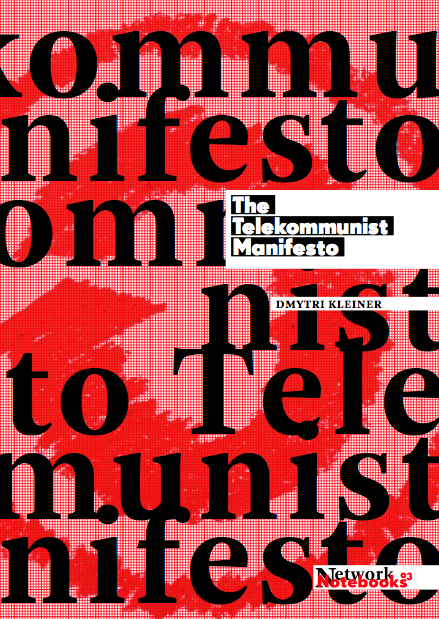
I decided to release the Networked Disruption book under this license because I consider it a coherent intellectual gesture, and also a “business experiment”. From what Dmytri told me this is the first book released under this license after the Telekommunist Manifesto, and hopefully the use of such license, if increased, will be part of poking a small hole in the capitalist economy, generating value which is not going into few owners’ pockets, but is shared equally among the workers and producers. This is also the reason why all my publications exist both online and on paper and are freely downloadable from the web, because it would be contradictory to write about certain topics and then release my toughts under proprietary licenses. In this case, since the book is about disrupting business, I decided to apply a disrupting business license, and to my point of view this is what the Peer Production License is.
Conclusion:
Bazzichelli’s investigation is a timely and necessary critique on how to free up networked forms of freedom of expression and its varied practice. At first, I was suspicious. Indeed, in a later publication on the subject co-edited by Tatiana Bazzichelli & Geoff Cox, called Disrupting Business: Art and Activism in Times of Financial Crisis; “Bifo” Berardi, in his article EMPTINESS says “Business is, in my opinion, the most despicable word in the vocabulary. Well, I will try to express it better: the meaning and implications of the word ‘business’ in contemporary culture and daily life, and the positive emphasis placed on this term, are the most telling symptoms of the abysmal alienation of our time.” On this I agree.
We are all emersed in the sea of neoliberalism and we are struggling to keep our heads above the water at various levels. Some are aware of it and are not dealing with it, most are unconscious of it and are drowning in it, and then there are those actively awake and exploring different and innovative ways to survive and hack ‘around, in between and through’ this deep totalising ocean.
Whether we like it or not, business unfortunately is the dominating regime controlling our interactions, and this includes our cultural, digital interfaces and social contexts. Bazzichelli asks us to stare into the monster’s face – what Bifo sees as a deep emptiness. She pulls out of the slimey depths a glimmer of hope and an advancement for playful and critically aware forms of artistic disruption. It is an academic and cultural hack and reminds me of Donna Haraway’s proposition in the mid 90s for Situated Knowledges. Haraway realised with other collaborators that it was a fantasy to think that the patriarch was going to somehow willingly hand over control and be enlightened to the idea that women scientists should be accepted as equal in history and academia.
“We seek not the knowledges ruled by phallogocentrism (nostalgia for the presence of the one true world) and disembodied vision. We seek those ruled by partial sight and limited voice – not partiality for its own sake but, rather, for the sake of the connections and the unexpected openings situated knowledges make possible. Situated knowledges are about communities, not isolated individuals.” [4] (Haraway 1996)
Her proposition is not suggesting that critical, ethical artists and pranksters give up and put down their tools and become business men and women instead. Using terms such as ‘disrupting business’ is not conforming or giving up the fight. It is a shift in strategy. She has successfully illustrated that there is a continual rise in imaginative experimentation where artistic hacking with the protocols, interfaces, code, data and surveillance is alive and well. It is about infiltration of these ideological defaults and the power systems that rely on them. Resistance is not futile, it is just changing direction from reliance for absolute desire (which lets face it is rarely fullfilled) from momentary tactics and momentary hacks, into informed hacking with socially aware and engaged strategies. She is asking for an intelligent response, a less macho way in dealing with the problem. This means building deeper relations with others through affinities and sharing critical knowledges while disrupting the business of neoliberalism. And most of all, carry on playing…